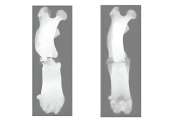New treatment method using plasma irradiation promotes faster bone healing
"Break a leg!" is a welcome blessing of good luck, but who wants to hear that they have actually broken a bone? What's worse, fractures that are displaced or complex require surgery and possibly lengthy recovery times while ...
Apr 16, 2024
0
14









